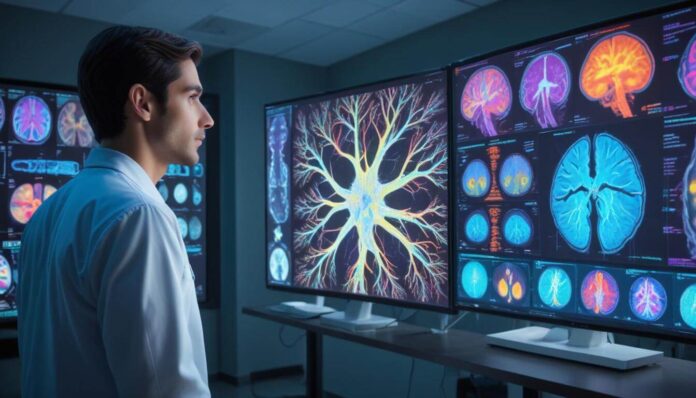Psychedelics like LSD, DMT, and psilocybin are increasingly a focal point in scientific research due to their remarkable effects on neuronal growth and connectivity in the brain’s prefrontal cortex. A groundbreaking tool developed by researchers at the University of California, Davis, is leading this investigative wave intending to unlock psychedelics’ therapeutic potential.
Understanding the impact of psychedelics on the brain
This newly developed noninvasive tool, known as CaST, measures the activity and changes in neurons and biomolecules activated by psychedelic drugs. With its application in recent studies conducted on mice, it offers unprecedented insight into how these substances interact with our brain’s most crucial areas.
The role of the prefrontal cortex
The prefrontal cortex plays a pivotal role in various high-level functions, including decision-making, personality expression, and social behavior. Understanding how psychedelics affect this brain region could significantly enhance our knowledge of mental health treatments. For instance, elevated calcium levels in neurons were observed in experiments using CaST, indicating increased activity and growth.
Potential therapeutic benefits of psychedelics
The ability of psychedelics to foster the growth and strengthening of neurons presents immense potential for treating numerous psychological conditions. From depression to PTSD, these substances may offer more effective treatment options compared to traditional pharmaceuticals. With the advantage of promoting neuroplasticity, there’s hopeful anticipation in the medical community.
Growth and strengthening of neurons
This growth and strength in neural connections facilitated by psychedelics can be transformative. Psychedelics seem to catalyze an environment that encourages brain cells not only to grow but also to form new neural pathways. These processes are essential for cognitive flexibility and resilience.
Addressing neurological disorders
Emerging research suggests psychedelics might aid in reversing some effects related to neurological conditions such as Alzheimer’s disease and other forms of dementia. By fostering neuron growth and reinforcing synaptic connections, they offer a promising route towards mitigating the cognitive declines associated with these diseases.
Scientific exploration with CaST
The new CaST technology represents a significant leap forward in monitoring the immediate effects of psychedelics on the brain. During experiments, this tool has shown how these substances raise calcium levels, shedding light on the mechanisms behind neuronal activation and growth.
Real-time observation and analysis
The capability to observe real-time changes in neuronal and biomolecular activity under the influence of psychedelics means scientists can better understand how these phenomena correlate with behavioral changes and therapeutic outcomes. This real-time data provides invaluable insights that static or delayed observations cannot offer.
Implications for Future Therapies
Through continued use and improvement of tools like CaST, researchers hope to refine the therapeutic applications of psychedelics. The precision in tracking biochemical activities leads to better-targeted treatments and personalized medicine approaches.
Looking ahead: The promise of ongoing research
As the biomedical field continues to explore and validate the potent effects of psychedelics, we stand on the brink of potentially revolutionizing mental health treatment. There is growing interest and investment in further studies aimed at uncovering the extensive range of benefits that these substances may offer.
Bridging gaps in current treatment methodologies
The innovations brought through technologies like CaST allow us to address gaps within current psychiatric and neurological treatment methodologies. Psychedelics could serve as powerful adjuncts or even alternatives to existing therapeutic practices, providing relief where conventional methods fall short.
Ethical considerations
While promising, the ethical implications surrounding the use of psychedelics need scrupulous attention. Ensuring proper regulatory frameworks and clinical guidelines is paramount to providing safe and responsible usage. Ongoing dialogue among scientists, ethicists, and policymakers will shape the future landscape of this exciting frontier.
Conclusion: Pioneering a new era in neuroscience and therapy
The innovative work being done with psychedelics marks a pioneering era in both neuroscience and therapeutic approaches. With tools like CaST facilitating deeper understanding, the horizon looks promising for leveraging these substances in managing and potentially curing debilitating mental and neurological disorders.


